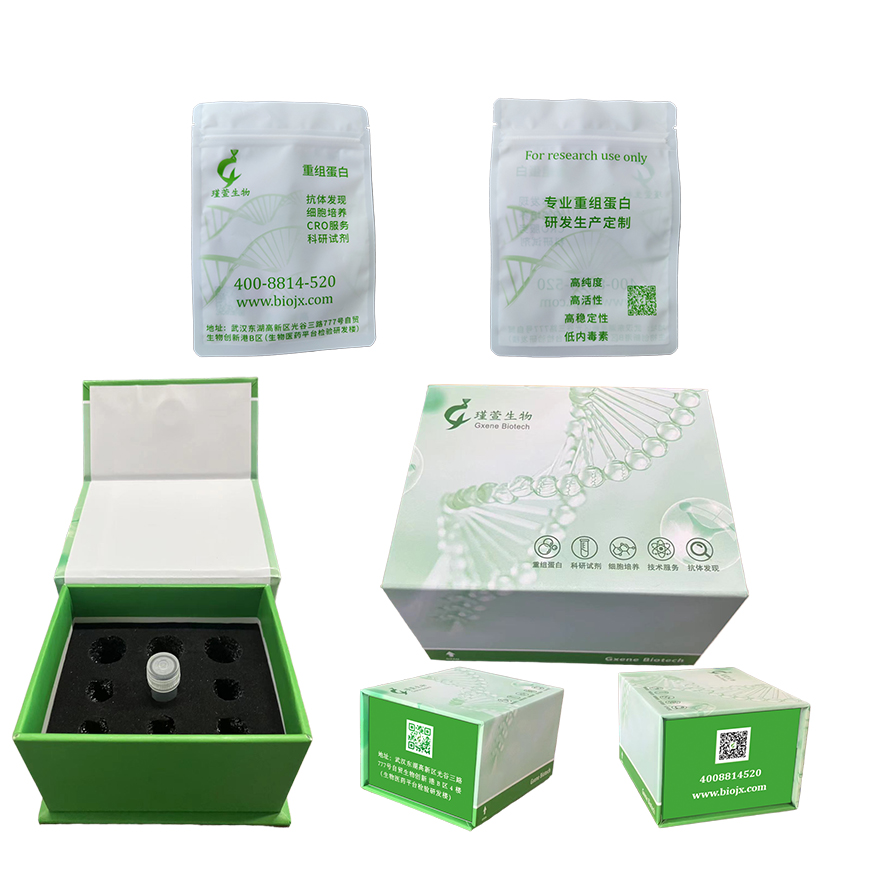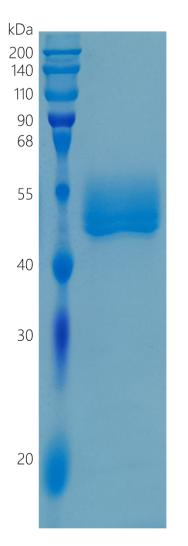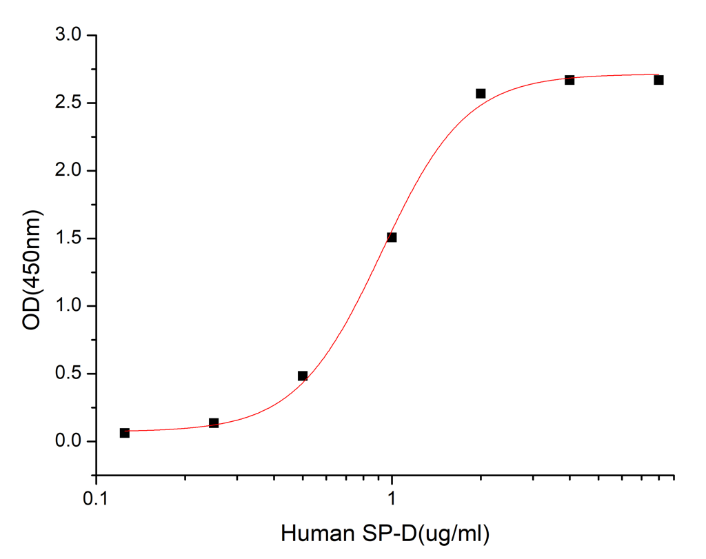




研究方向
SIRP beta 1 蛋白是一种免疫球蛋白样细胞表面受体,在受体酪氨酸激酶偶联信号传导过程的负调节中发挥着至关重要的作用。此外,它还参与酪氨酸激酶 SYK 的募集,与 TYROBP 相关时触发骨髓细胞的激活。SIRP beta 1 作为具有二硫键的同二聚体存在,与 TYROBP 特异性相互作用,导致 SYK 的募集。这种复杂的分子相互作用将 SIRP beta 1 置于细胞信号传导调节的纽带,突出了其在调节骨髓细胞激活以及有助于其功能作用的复杂蛋白质相互作用网络中的重要性。
When Recombinant Human SIRP beta 1/CD172b is immobilized at 1 µg/mL (100 µL/well), Recombinant Human SP‑D binds with an ED50 of 0.1-0.8 μg/mL.
Signal-regulatory protein beta-1 (SIRP beta 1) also known as SIRP1, belongs to signal-regulatory-protein (SIRP) family, and immunoglobulin superfamily.Signal-regulatory proteins (SIRPs) are cell-surface glycoproteins expressed on myeloid and neural cells that have been shown to recruit SH2 domain-containing protein phosphatase 1 (SHP-1) and SHP-2 and to regulate receptor tyrosine kinase-coupled signaling. SIRP are classified as SIRP alpha molecules, containing 11- to 113-amino acid long, or SIRP beta molecules, with a 5-amino acid long intracytoplasmic domain. SIRP beta 1 is a new DAP12-associated receptor involved in the activation of myeloid cells, which contains a short cytoplasmic domain that lacks sequence motifs capable of recruiting SHP-1 and SHP-2. SIRP beta 1 acts as an activating isoform of SIRP alpha molecules, confirming the co-existence of inhibitory ITIM-bearing molecules, recruiting SHP-1 and SHP-2 protein tyrosine phosphatases, and activating counterparts, whose engagement couples to protein tyrosine kinases via ITAM-bearing molecules.